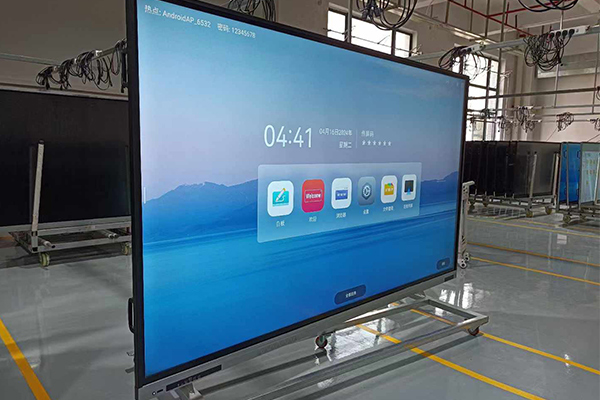How to choose the operating system for an all-in-one conference machine?
The operating system of the all-in-one conference machine mainly depends on your specific usage needs. The following are the characteristics and usage recommendations of two common operating systems:
Android:
Advantages: The Android system is suitable for local meetings and basic video conferencing. Thanks to its optimized touchscreen design, the Android system offers a superior intelligent interactive experience, better meeting the needs of businesses.
Suitable Scenarios: Suitable for small meetings, simple operations such as PowerPoint presentations, page annotations, and video playback.
Windows:
Advantages: Windows offers greater memory space and enhanced operability, supporting multi-window operation, making it ideal for users accustomed to computer work. It also offers better compatibility with various software, such as educational software, CAD design tools, and remote video conferencing software.
Suitable Scenarios: Conference machine suitable for advanced applications requiring large file processing, complex PowerPoint presentations, and HD video playback.
Dual-OS Option:
If your meeting needs are complex and require multiple scenarios, you can choose a dual-OS configuration: an integrated design with Android and Windows operating systems, allowing you to switch between them at will. This allows you to enjoy the convenience of Android while switching to Windows to run more specialized software when needed.
Broad Application Compatibility: Windows supports a wide range of professional and business software, while Android offers a rich array of multimedia and mobile applications. Dual-OS conference tablets therefore support a wider range of software and applications to meet diverse professional needs. This means users can accomplish virtually any task on a single device without worrying about software compatibility.
Flexible Interactivity: Dual-OS conference machines, combining Android and Windows, offer flexible switching between different usage scenarios. For example, when collaborating with a team, members can share content and annotate on Android, then switch to Windows when professional software is needed.
Multitasking: The dual-OS design allows users to simultaneously perform multiple tasks, such as editing documents or presenting presentations while simultaneously participating in a video conference.
Long-Term Investment Value: Dual-OS conference machines offer excellent value for money. This dual-OS functionality reduces the need to purchase additional equipment and simplifies the cost and process of maintenance and upgrades.
Data Security: Windows provides strong data encryption and security features, while the isolated environment of Android helps protect user data. Dual-OS conference tablets thus safeguard corporate and personal information in diverse environments.
Conclusion:
In summary, if your meeting primarily focuses on basic operations and portability, Android is a good choice. If your meeting requires complex documents and advanced software, Windows offers stronger support. A dual-OS configuration is ideal for advanced users with diverse needs.

